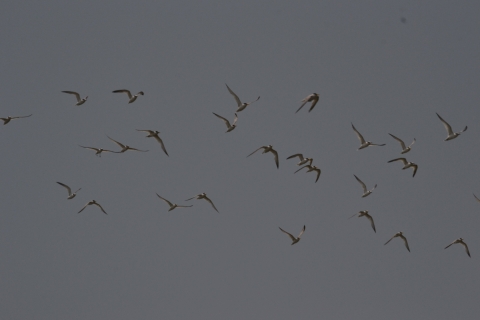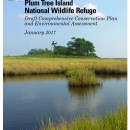What We Do
Wildlife conservation is at the heart of the National Wildlife Refuge System. It drives everything on U.S. Fish and Wildlife Service lands and waters managed within the Refuge System, from the purposes for which a national wildlife refuge national wildlife refuge
A national wildlife refuge is typically a contiguous area of land and water managed by the U.S. Fish and Wildlife Service for the conservation and, where appropriate, restoration of fish, wildlife and plant resources and their habitats for the benefit of present and future generations of Americans.
Learn more about national wildlife refuge is established to the recreational activities offered to the resource management tools used. Using conservation best practices, the Refuge System manages Service lands and waters to help ensure the survival of native wildlife species.
Management and Conservation
Refuges deploy a host of scientifically sound management tools to address biological challenges. These tools span active water management to wilderness character monitoring, all aimed at ensuring a balanced conservation approach to benefit both wildlife and people.
At this field station our conservation tool box includes:
Planning – Comprehensive Conservation Plan
The purpose of a comprehensive conservation plan (CCP) is to specify a management direction for the refuge for the next 15 years. The goals, objectives, and strategies for improving refuge conditions—including the types of habitat we will provide, partnership opportunities, and management actions needed to achieve desired conditions – are described in the CCP.
Habitat Restoration
We emphasize protecting the refuge’s wildlife habitats by allowing natural processes to occur unimpeded. Our refuge management efforts would continue to focus on minimizing human-caused disturbance of refuge habitats and wildlife, while working with a greater diversity of partners to conduct biological research, inventory, and monitoring efforts.
US Army Corps of Engineers Led Investigation
Plum Tree Island is identified by the US Army Corps of Engineers (COE) as a Formerly Used Defense Site and is managed by COE within a program of the same name. Operated as an active Air Force bombing range from 1917-1952, much of the “on the ground” management of the refuge has been limited due to obvious safety reasons. Site studies, remedial investigations, and feasibility studies have been and continue to be conducted by COE. Results of these efforts are anticipated to occur in the short term.
Natural Resources
Concurrent with the COE investigations, the refuge is developing a comprehensive conservation plan. The plan serves as a 15-year management guide, outlining goals and objectives. Some of the alternatives will be driven by the results of the COE studies, others will not. The refuge manages its wetlands, forests, and shoreline with a variety of inventory and monitoring methods. Surveys and research efforts occur with the help of partners, volunteers, and FWS staff. The refuge is able to be knowledgeable of and responsive to threats from non-native species, climatic changes, and outside pressures. Protection of resources of concern are a priority, given their elevated status. Management for those species include time of year restrictions, limited access, and monitoring. Closures to the public are for the protection of flora and fauna as well as human health and safety.
Cultural Resources
As a federal land agency, the refuge has as the important responsibility to protect and conserve cultural resources and landscapes. Protective measures include strict regulations prohibiting relic hunting, limiting public access, and conducting erosion assessments. The rich natural and cultural history of the site offers opportunity for authorized professionals to build a body of knowledge related to the area and interpret to a larger audience
Our Projects and Research
Plum Tree Island NWR is home to a number of wildlife resources found in the lower Chesapeake Bay including both federally and state listed species. Its pristine marsh habitat acts as nursery for many fish and roosts for migratory birds year round.
Refuge staff conducts a diverse set of surveys to monitor and manage the habitat and wildlife found on Plum Tree Island NWR. These surveys include estimating the population of the federally threatened northeastern beach tiger beetle, monitoring nests of state listed shorebirds such as the American oystercatcher, least tern and black skimmers, surveying for diamondback terrapin use throughout the refuge, winter waterfowl surveys as well as observing various indices to monitor saltmarsh health.
Law Enforcement
The Refuge Complex is patrolled by a Federal Wildlife Officer. Please report all wildlife crimes by calling 804-333-1470 ext.152 or contacting the Virginia Department of Game and Inland Fisheries at 800-237-5712. Please provide as much information on the crime as possible. You may remain anonymous.
Laws and Regulations
The refuge is not open to the public. Due to fragile habitats and safety concerns associated with its former use as a bombing range, public access is prohibited. Unauthorized entry is a federal offense and is punishable by fine and possibly imprisonment.

